
I was recently out at Google to preview new stuff, including the new Pixel Watch 3, as well as other behind-the-scenes testing and lab pieces. In doing so, I had a packed day on their sprawling campus, and the singular method we used to get around from meeting to meeting (all in different buildings quite far apart), was via cycling. Specifically, Google’s on-site bike-share system called the Google Bike, or as Googler’s would say, The G-Bike.
During this time, I had multiple employees ask me if I’d be reviewing the bike. All of them seemed like they might be joking when they asked it. Obviously, I’m not one to joke about reviews.
Thus, here we are: A (Proper) In-Depth Review of the Google Bike.
And yes, there will be an unboxing section. It’s just a bit later down in this review.
Key Features:
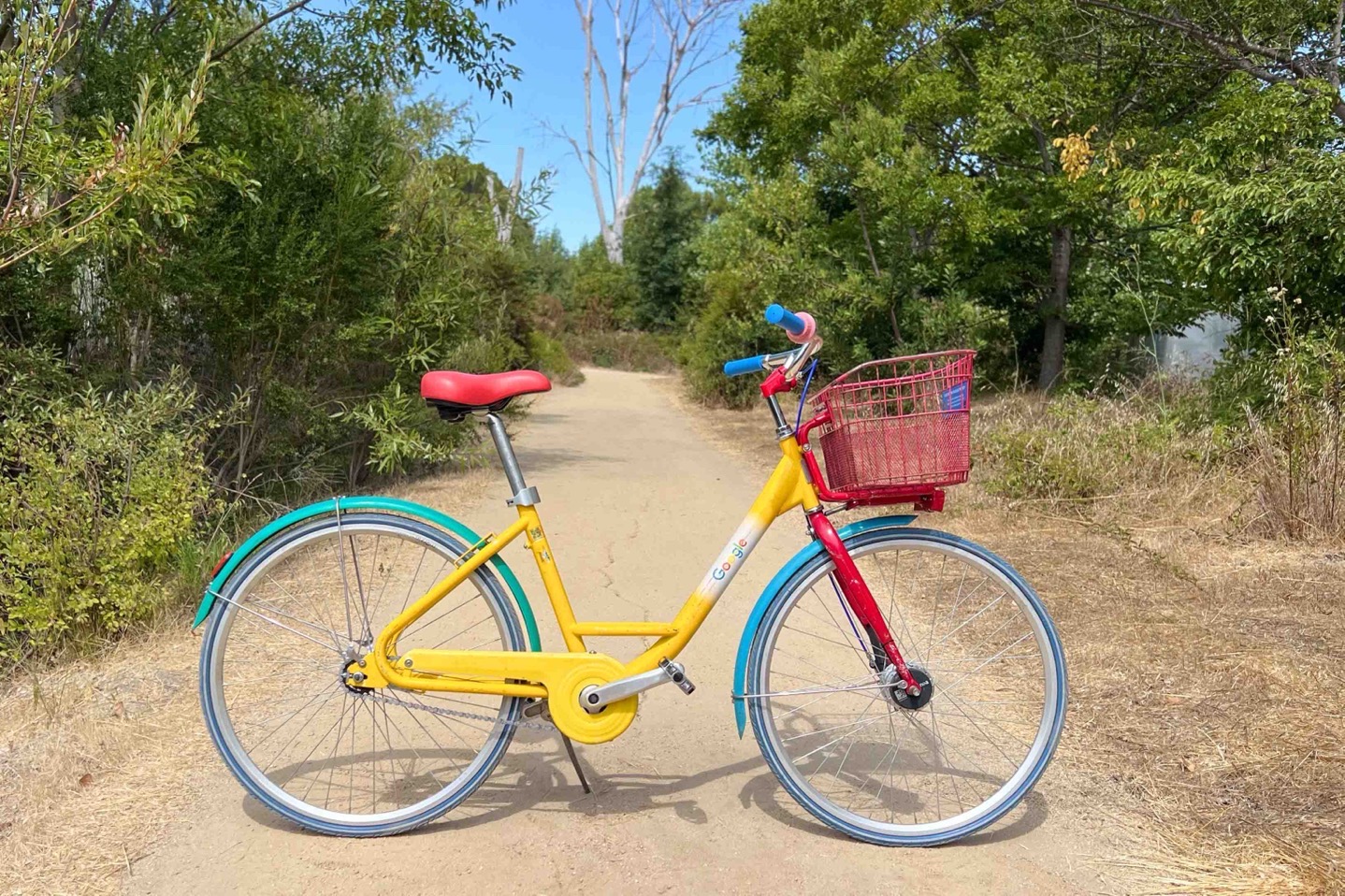
The first thing to understand about the Google Bike is that it’s totally free to use, and totally unencumbered by locking mechanisms or really any electronics at all. As such, the company doesn’t have to worry about compatibility with new versions of Pixel phones or Pixel watches, since there’s no specialty app or such.
To reserve a bike, you walk outside and use your eyes to search for the colorful bike. They’ll generally be in an equally colorful parking spot near the front door of every building. Also, they might be randomly in a parking space, on the sidewalk, next to a tree, or in a bush. Those bikes are more free-spirited ones.
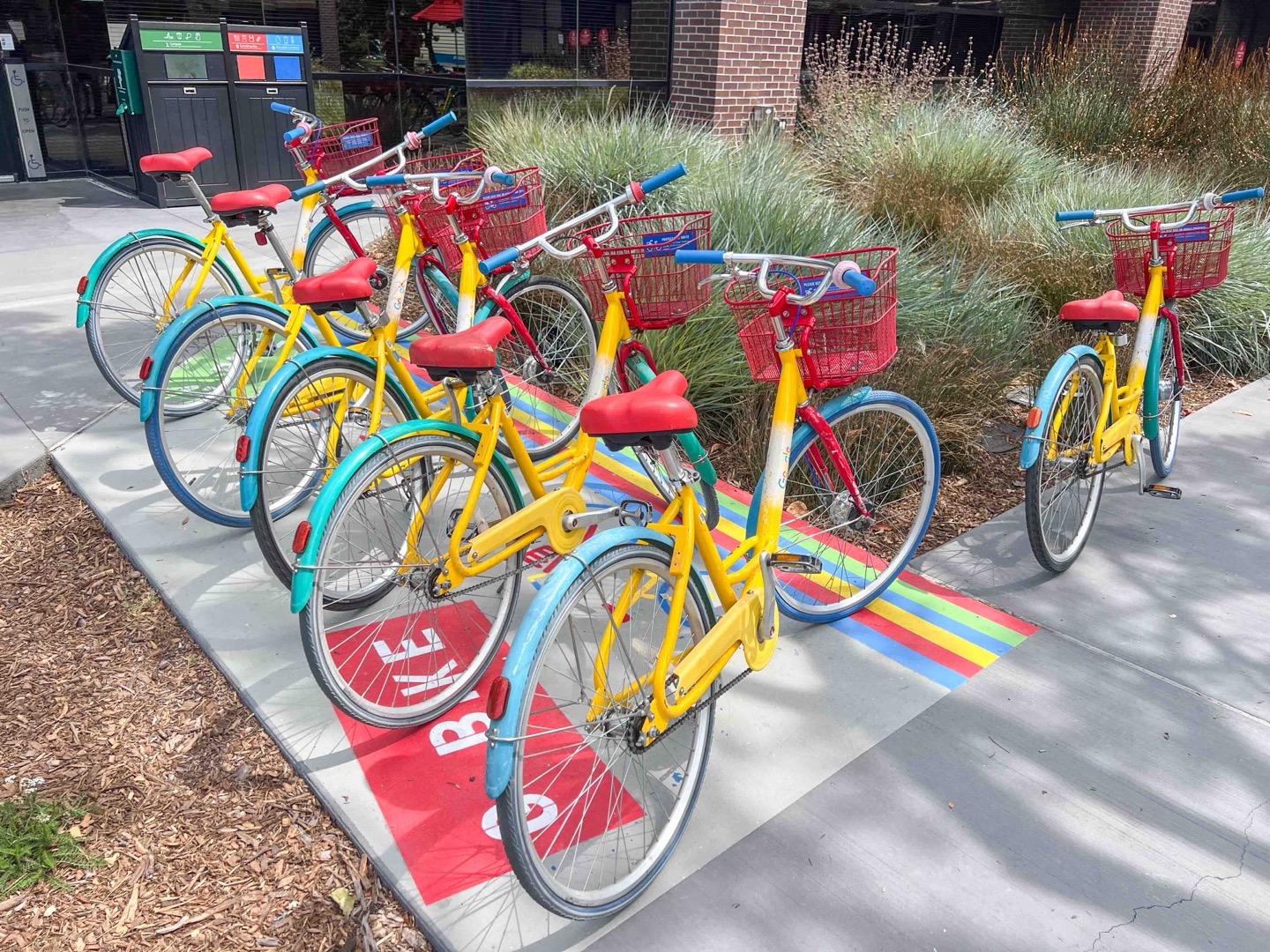
If you wish to utilize a helmet, you’ll probably find one in a bush:
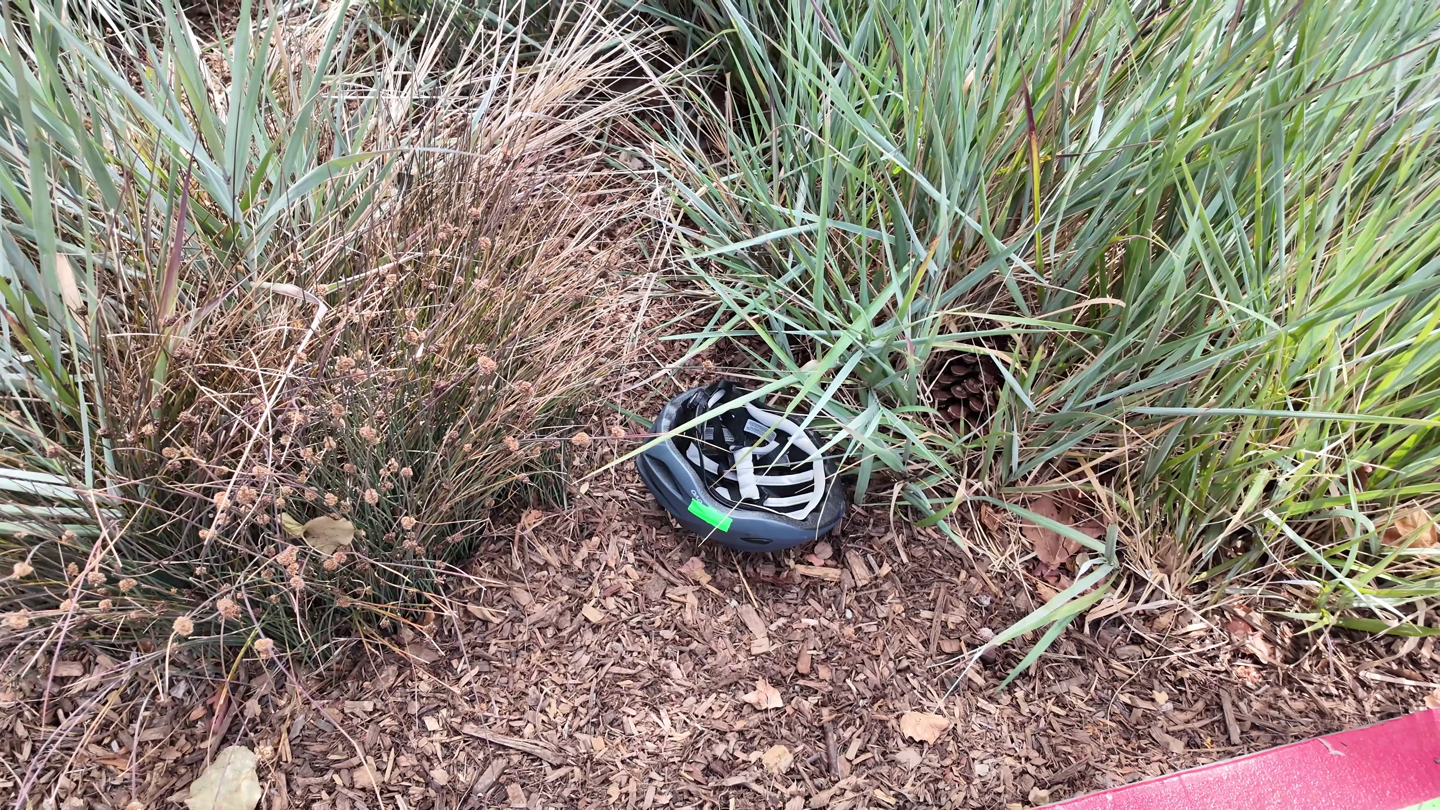
The bikes are all identical, none of which are e-bikes. So, really, you’re deciding on looks alone: How much has this bike been loved, via the number of scratches and marks on the side.
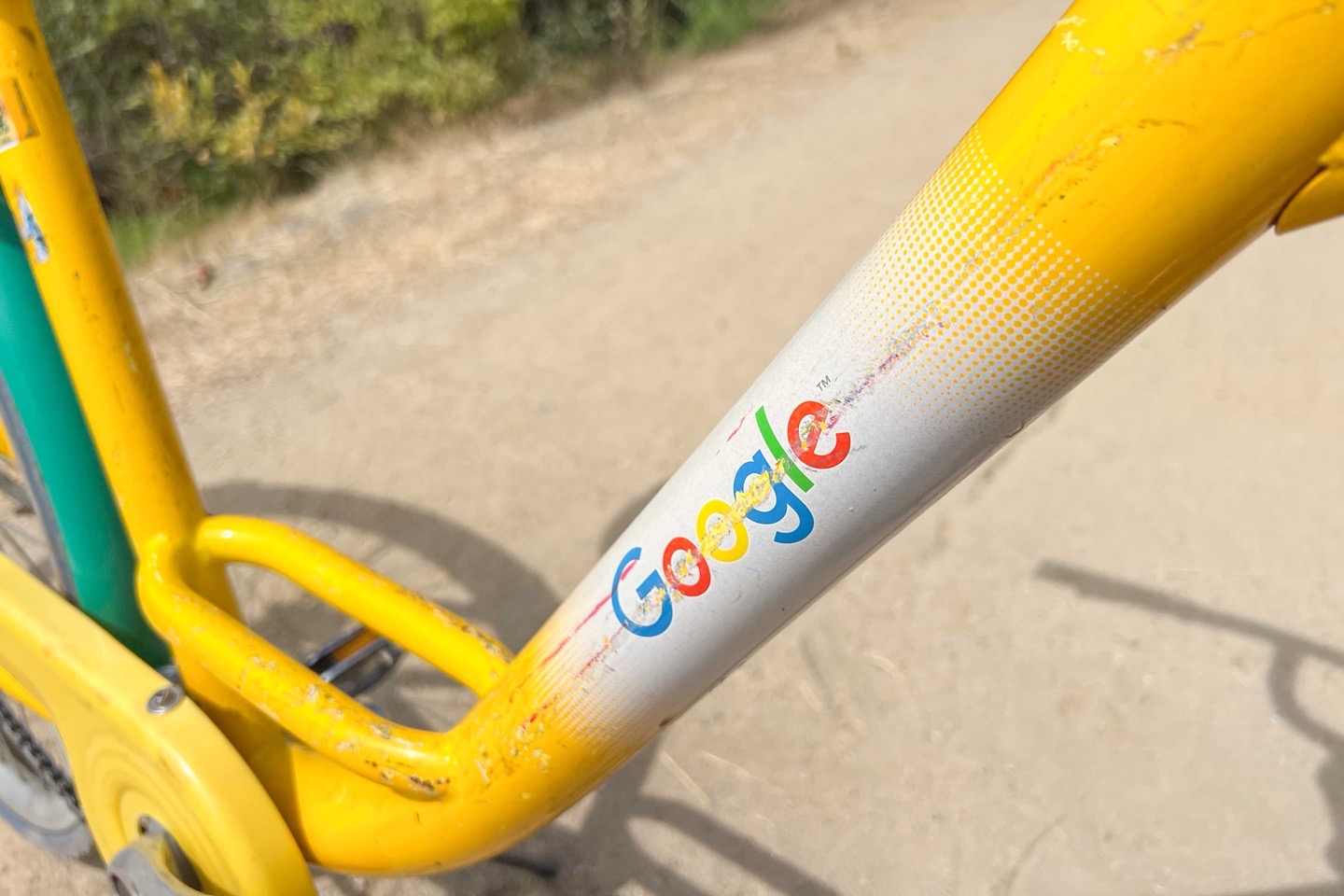
Once you’ve decided on your steed, you’ll adjust the bike seat to meet your fit coordinates. Said bright red very luxurious bike saddle surprisingly didn’t get hot in the sun on the days I was there (even though it was in the mid-80’s F). I appreciate that. To adjust the saddle height, you’ll use the clamp on the seat post. Open clamp, move seat post, close clamp.
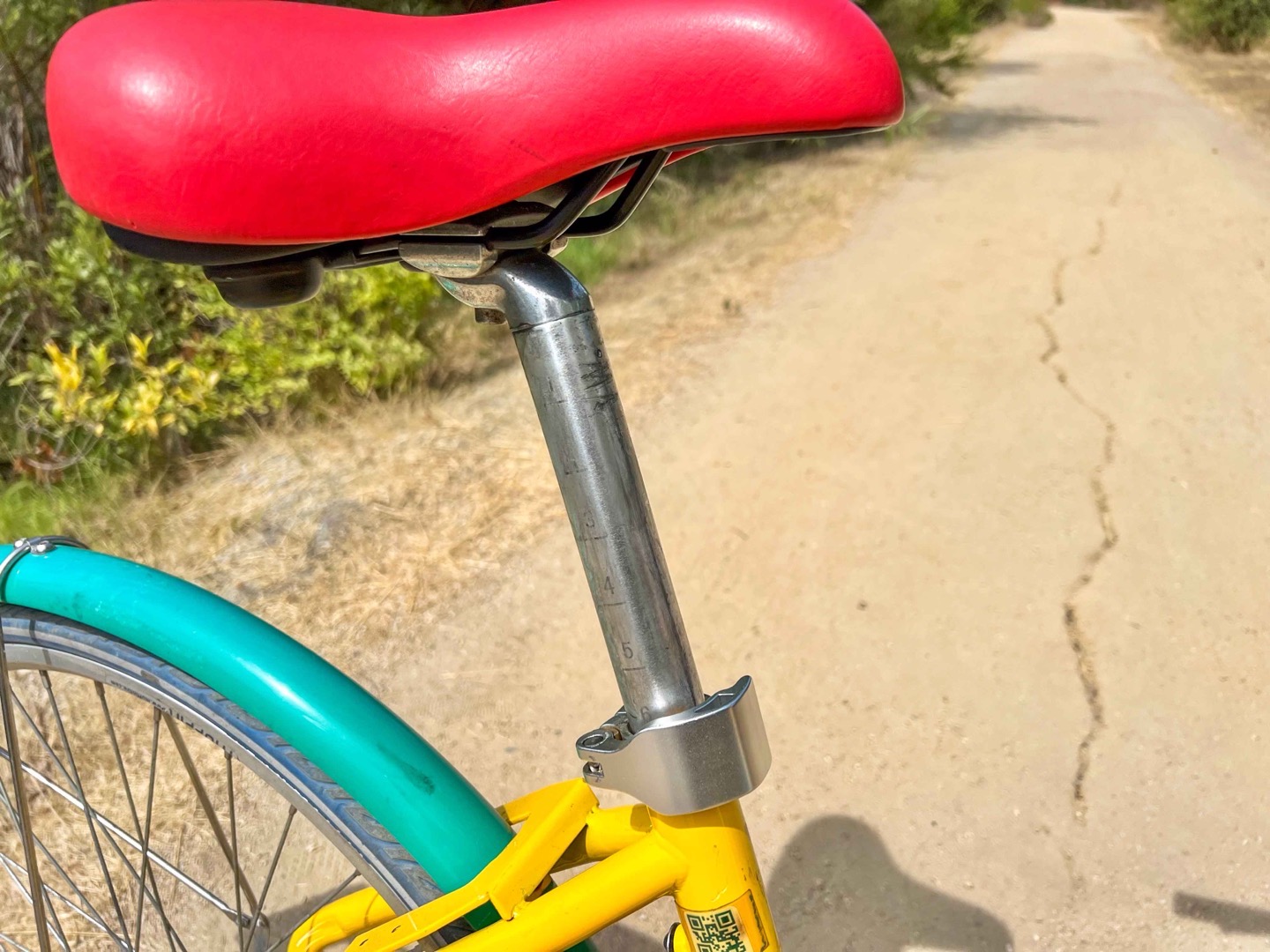
The seat post has markings on it, so you can quickly set the bike to your preferred default settings. Also, in the event the saddle clamp has seen too much action recently, you can adjust the tightness via a small screw on the opposite side.
Next, simply pedal. Again, there’s no locks, no reserving the bikes, or no assigning the bike to you. You just pedal away like you stole it (we’ll get to theft in a second). When it comes to pedaling, the bikes feature fairly rugged pedals with reflectors on them. Thankfully, they don’t have any of those miserable metal spikes that some pedals have (which invariably puncture your shins at some point).

The pedals are connected to 165mm crank arms. It’s notable to see Google is on top of the larger trend towards shorter crank arms. The pedal attachment point is also standard, thus allowing one to easily add a pedal-based cycling power meter to the bike, in the event one needs to capture such metrics in a race or competition.
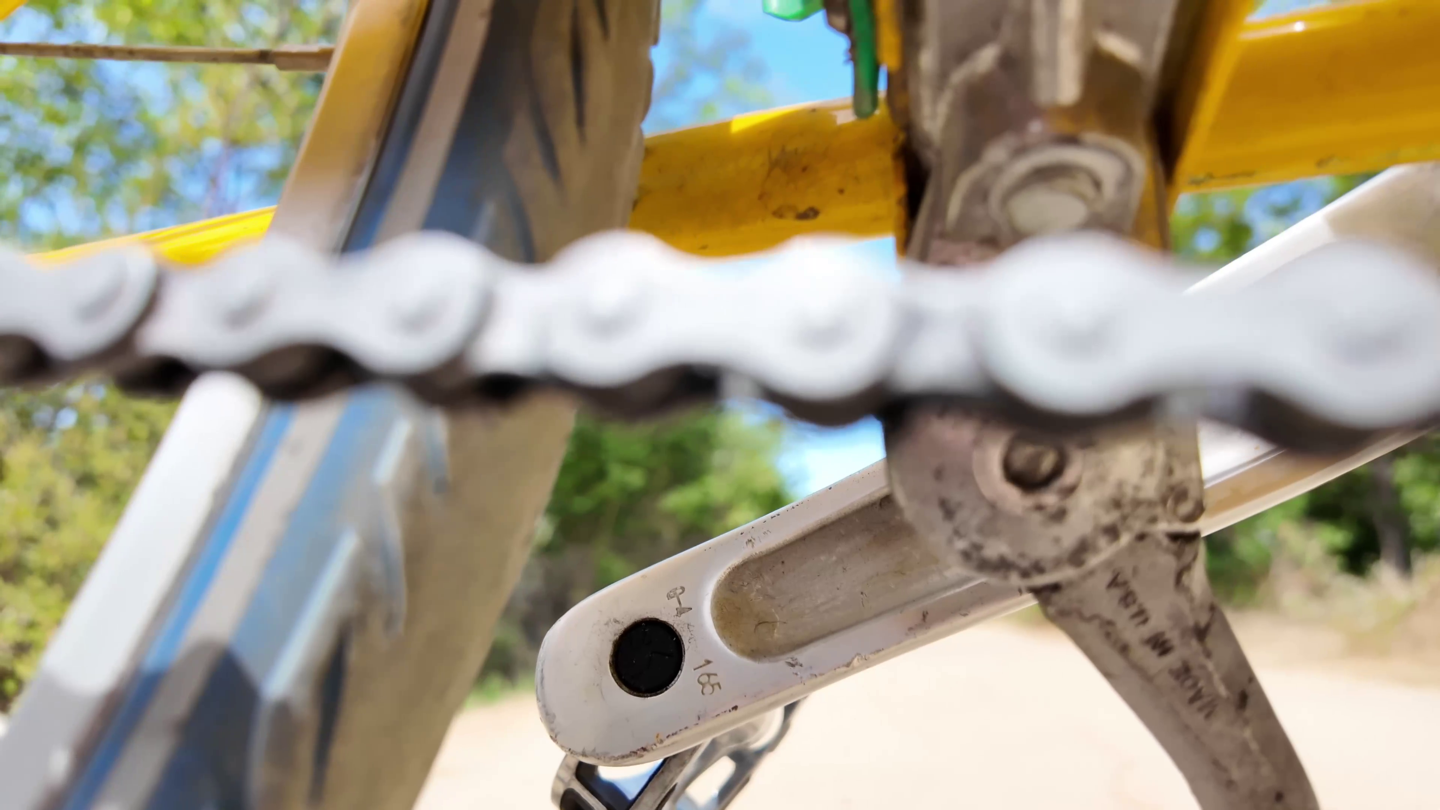
However, the only challenge there is that Google’s own Pixel Watch doesn’t support cycling power meters. While virtually every one of their competitors do, that gap still exists in their lineup. Therefore, Google employees wishing to install power meter pedals on the bike, will have to risk using a competitor product in order to capture that critical race data. Life choices.
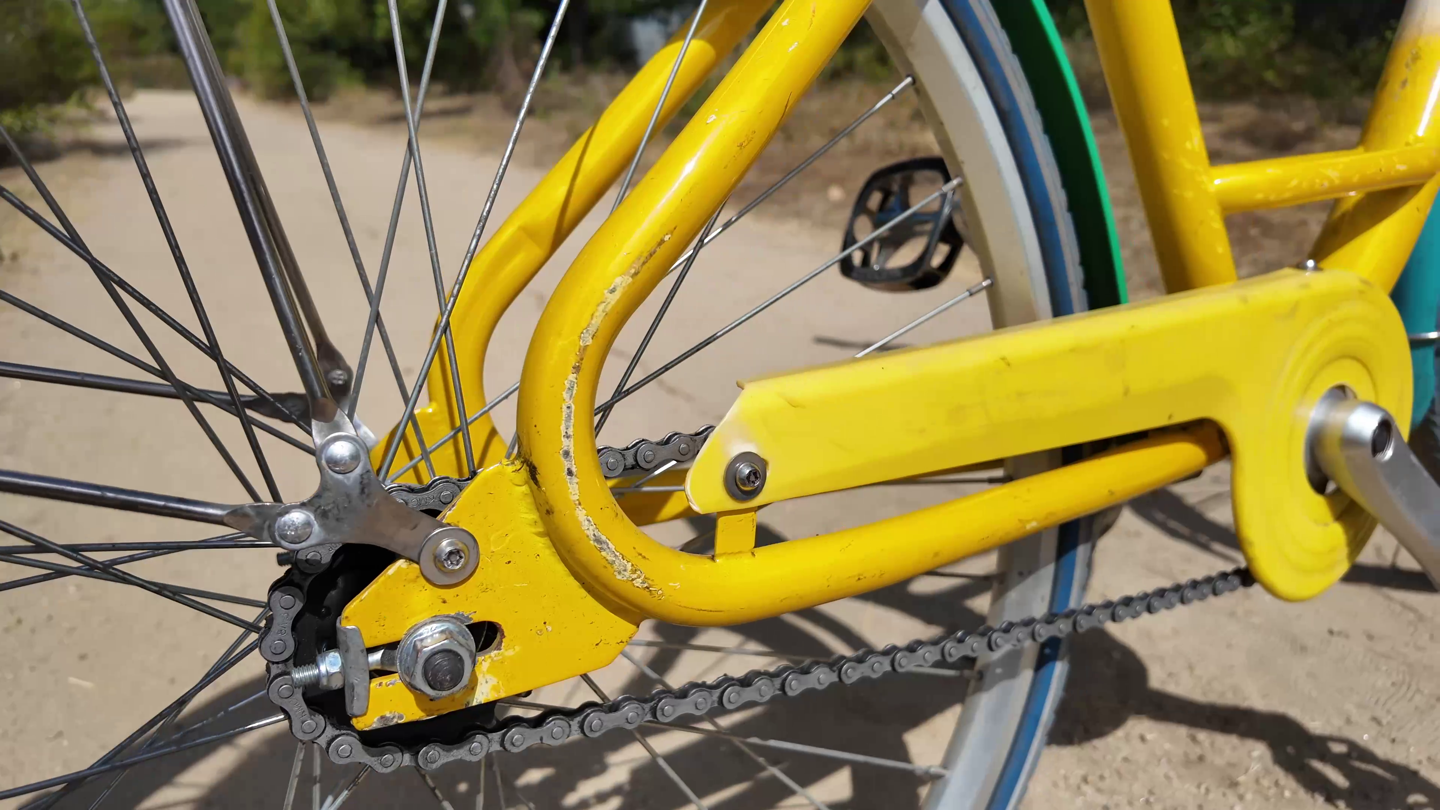
Meanwhile, the drivetrain is a single-speed. There are no gears, just one gearing appropriate for very flat terrain. During my day, we did make one bridge crossing, which resulted in a tinge of regret that the bike didn’t have secondary gears.
If you need to brake, you have two choices:
1) Handlebar brake on the left side
2) Pedaling backwards via drivetrain braking
Both worked equally well in my testing.
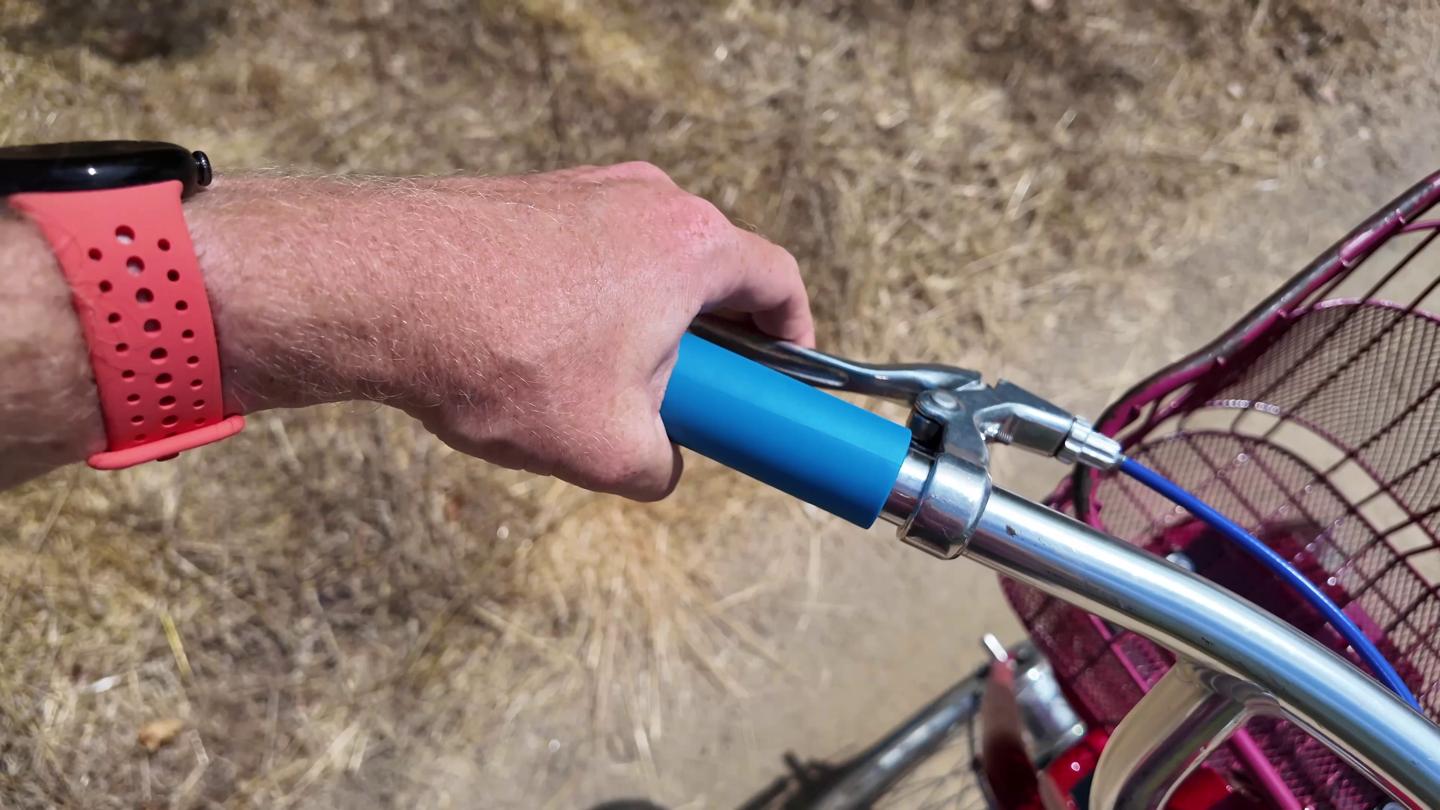
Also up on the handlebars is the noise maker. This rotating bike bell is quite audible, and easily alerts those around you to your impending arrival. Thankfully, the vast majority of the Google Campus roads (since it’s basically just sprawled across a mile or two of business parks), have bikes lanes of some sort.
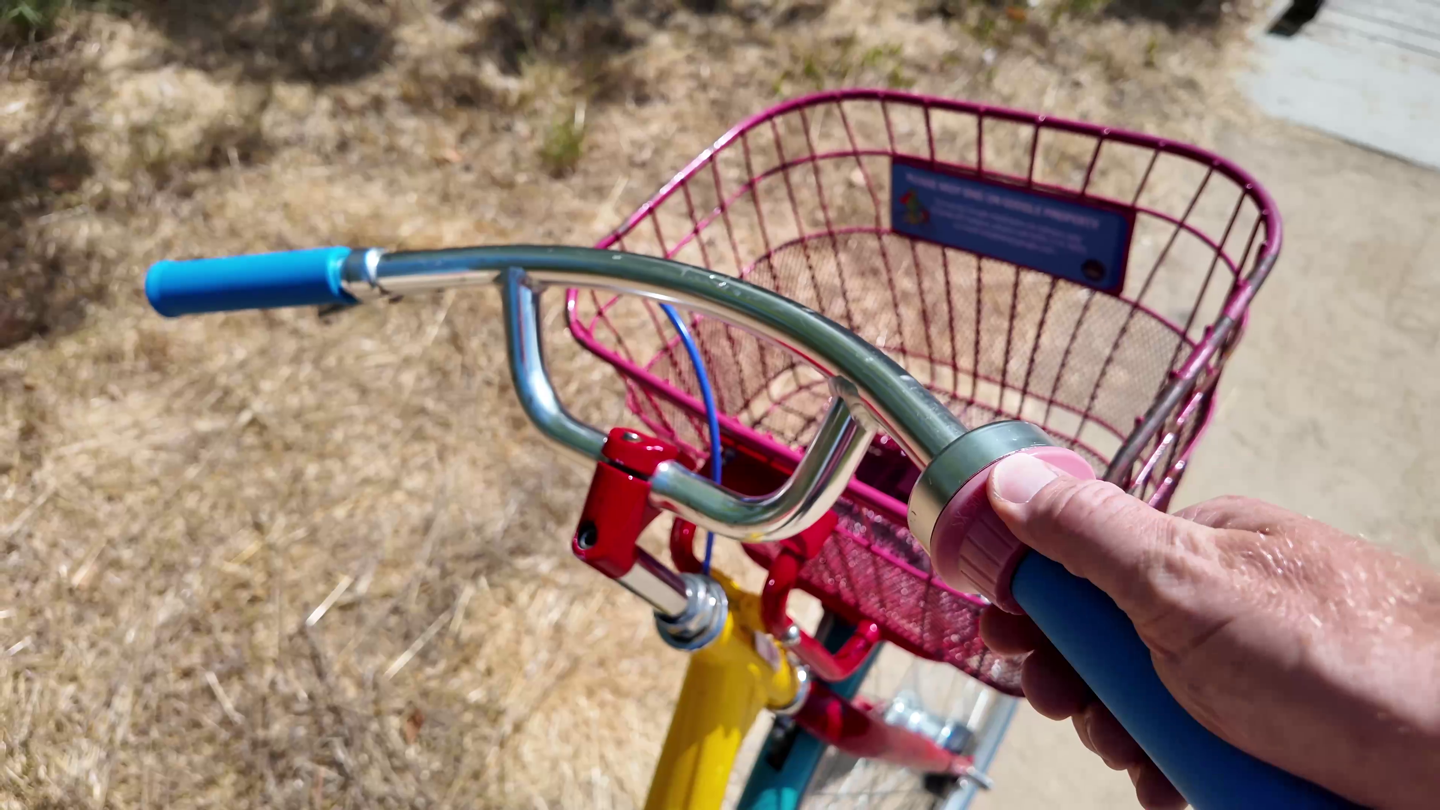
Below the bike bell you’ll find the bike basket. This is actually one of the more cleverly designed bike-share bike baskets I’ve seen. Aside from the high sidewalls and mesh (to ensure you can see you haven’t left anything behind), it actually doesn’t rotate with the handlebars. This means that if you pack it heavily with a big backpack, it won’t cause steering to be questionable during cornering, as the weight stays centered. You can see this in the video above.
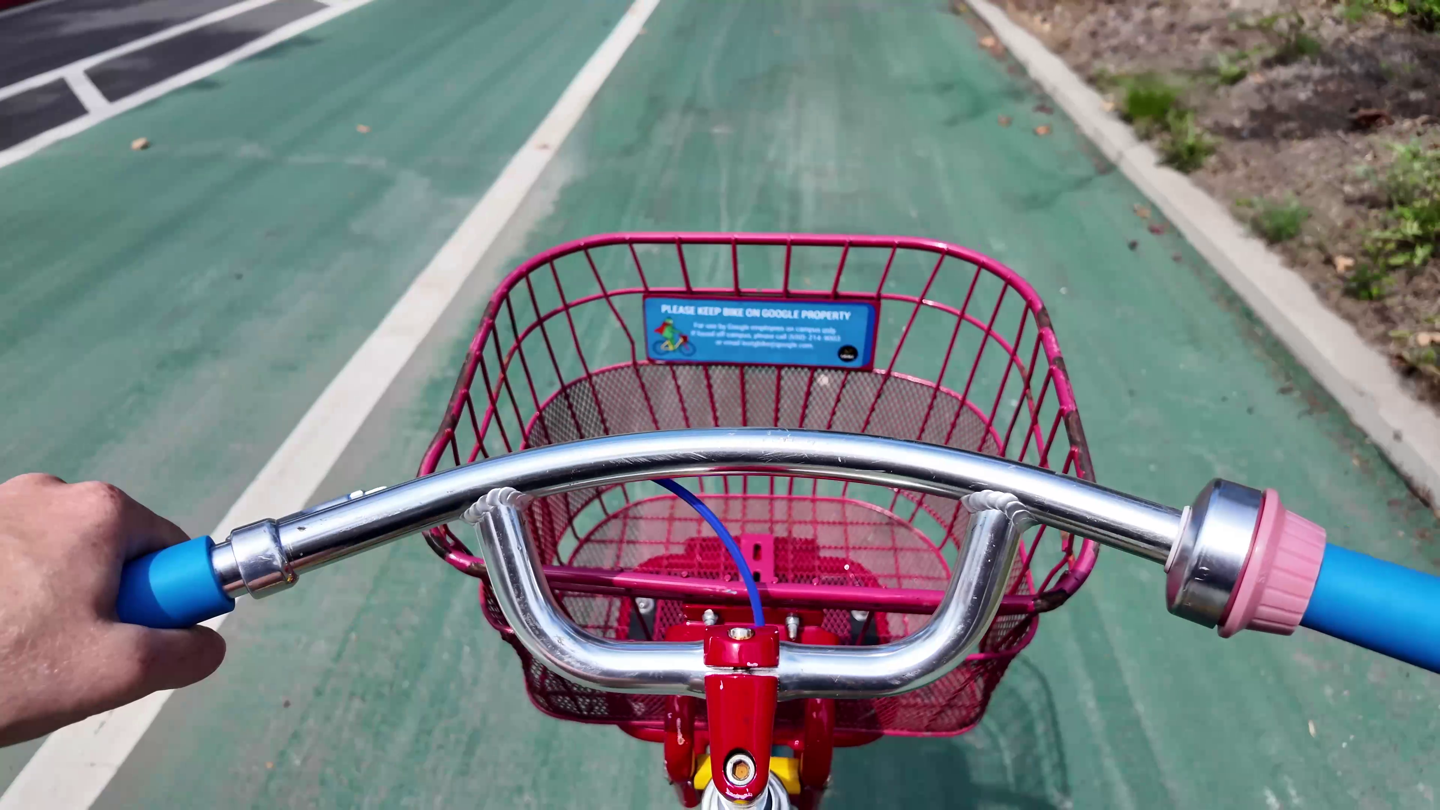
Below the bike basket is a front light that’s connected to the dyno hub down below on the front wheel. I was unable to test this component during my review period, due to lack of night riding. I’ll save that for a future review cycle.
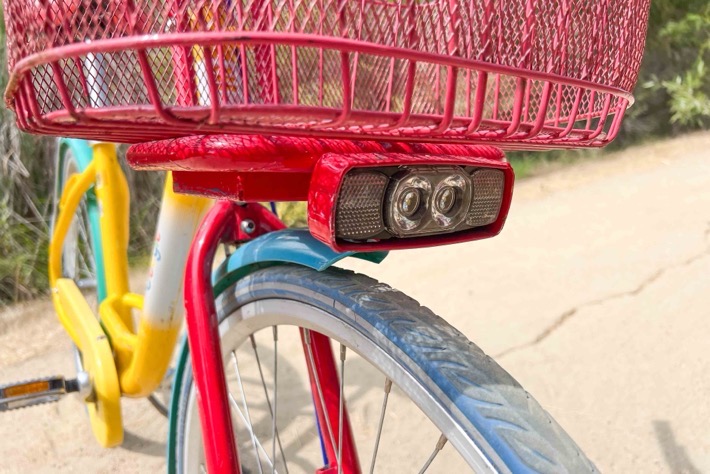
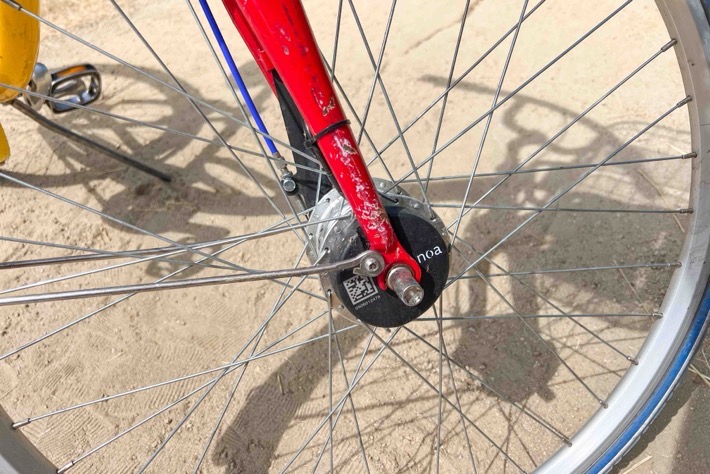
However, there does not appear to be a rear light, but rather, just a reflector on the back. Or at least, I didn’t see any wiring back there. Again, things I’d need to validate in a future night-focused review period.
Performance Considerations:

When it comes to speed and stability for performance aspects, the bike is only one of those.
Speedy it is not.
The bike is very stable while riding, with its 26” tires, which roll along quite comfily. These tires have a reasonable amount of grip for city street riding, even in rain, as well as some brief compact dirt bike path adventures, which exist around campus.

Likewise, the turning radius of the bike is quite good, enabling you to corner far sharper than you’d ever need to corner (at speed or otherwise).
However, when it comes to getting the bike up to speed quickly, such as drag racing off the stoplight line, the tank leaves much to be desired. Coming in at ~34lbs (obviously I weighed in), it’s not super responsive to sprinting.
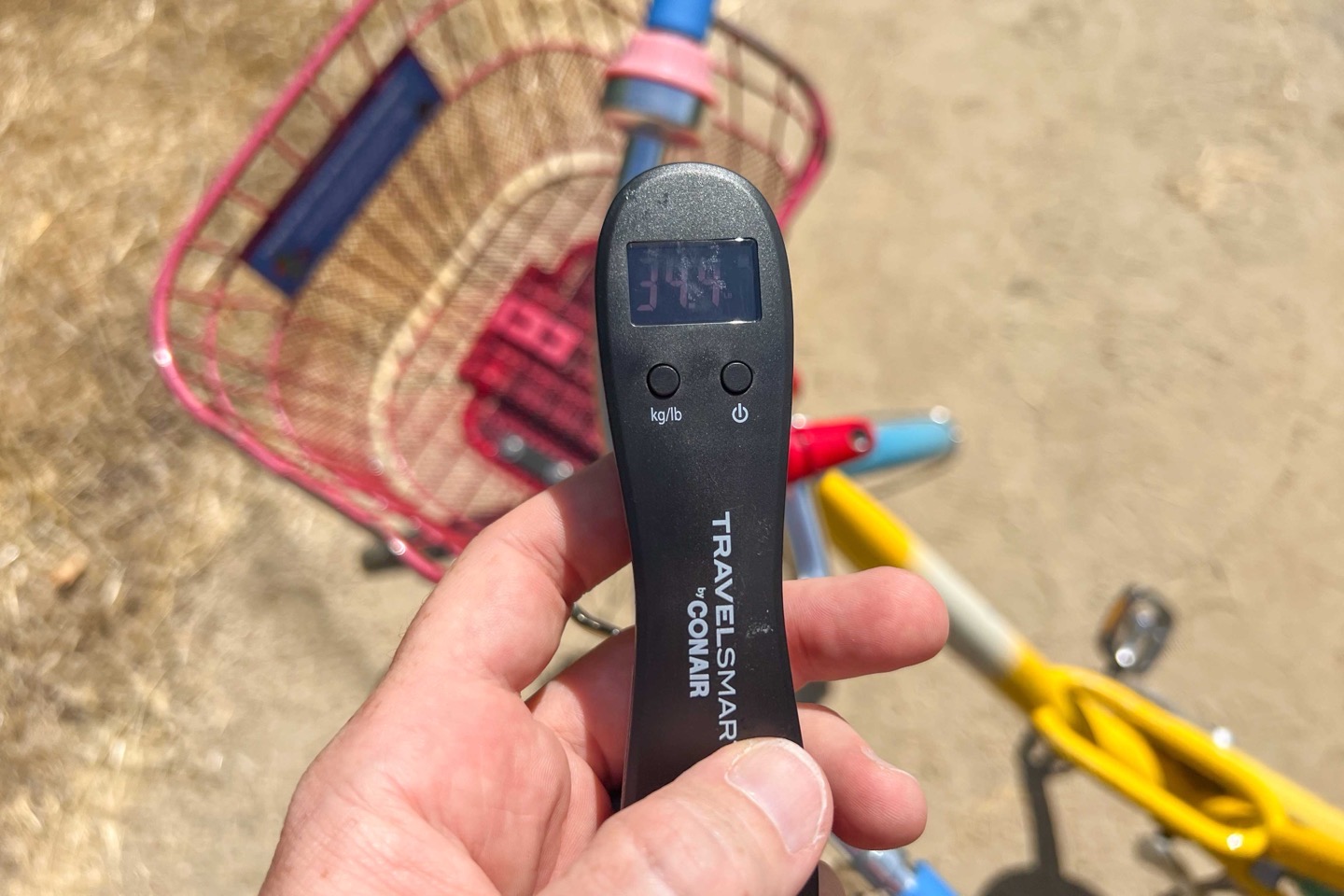
Specifically, you could probably drag a table faster than sprint with this thing. Lack of gearing means you’re starting in the big gear, with a big bike and big weight, and then needing to get it up to speed. Once at speed, you’re quickly in a very high cadence range to try and drive that sprint forward. But alas, the gearing just isn’t there to get the power you want at that point.
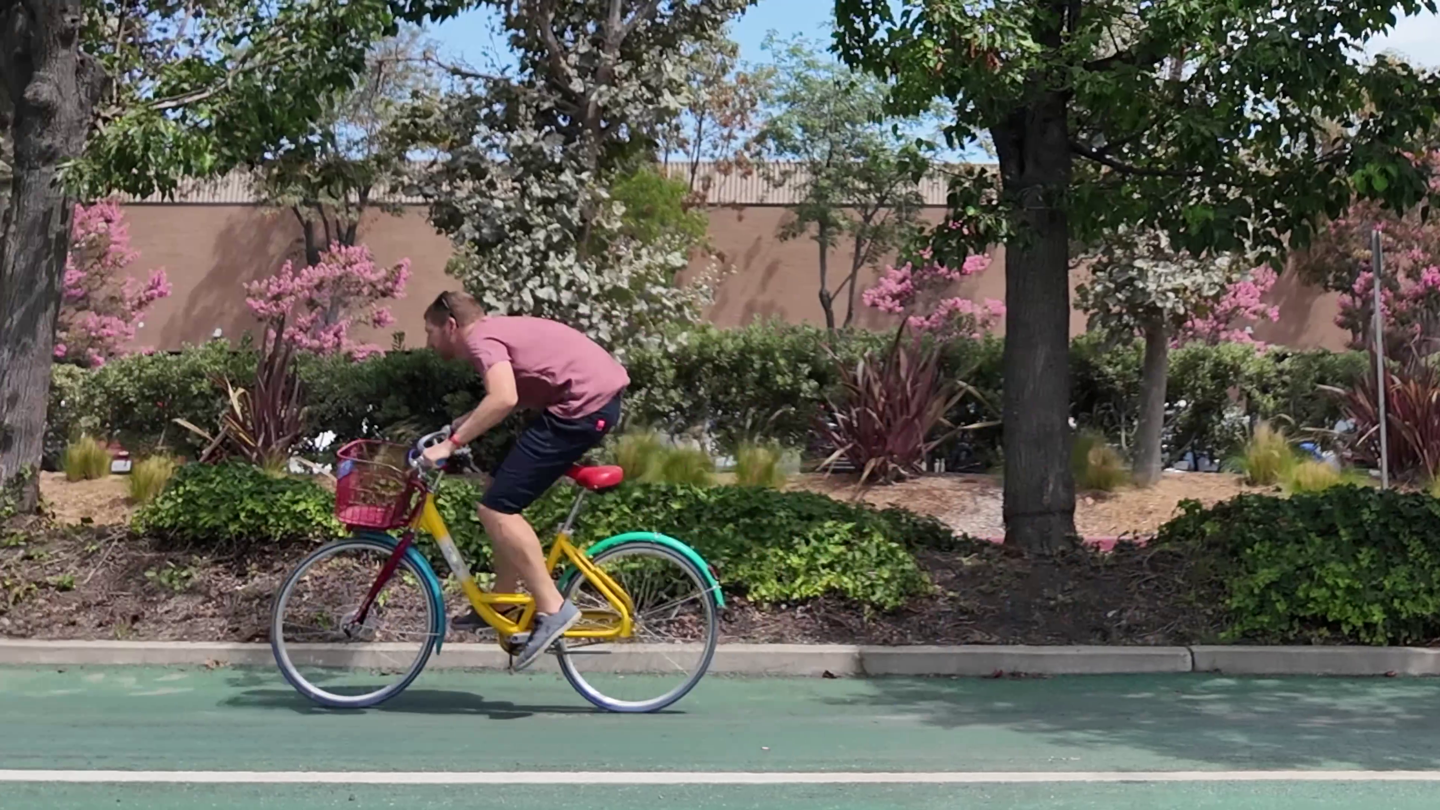
Still, while sprinting may not be spiritually enlightening, Google employees apparently do take these on long treks. Some have ridden them from Google’s San Francisco office down to their Mountain View office, an approximately 40-mile trek that would likely leave almost anyone with saddle sores (given the rather non-performance-oriented saddle). Especially on a hot sweaty day.
Buying a Google Bike:
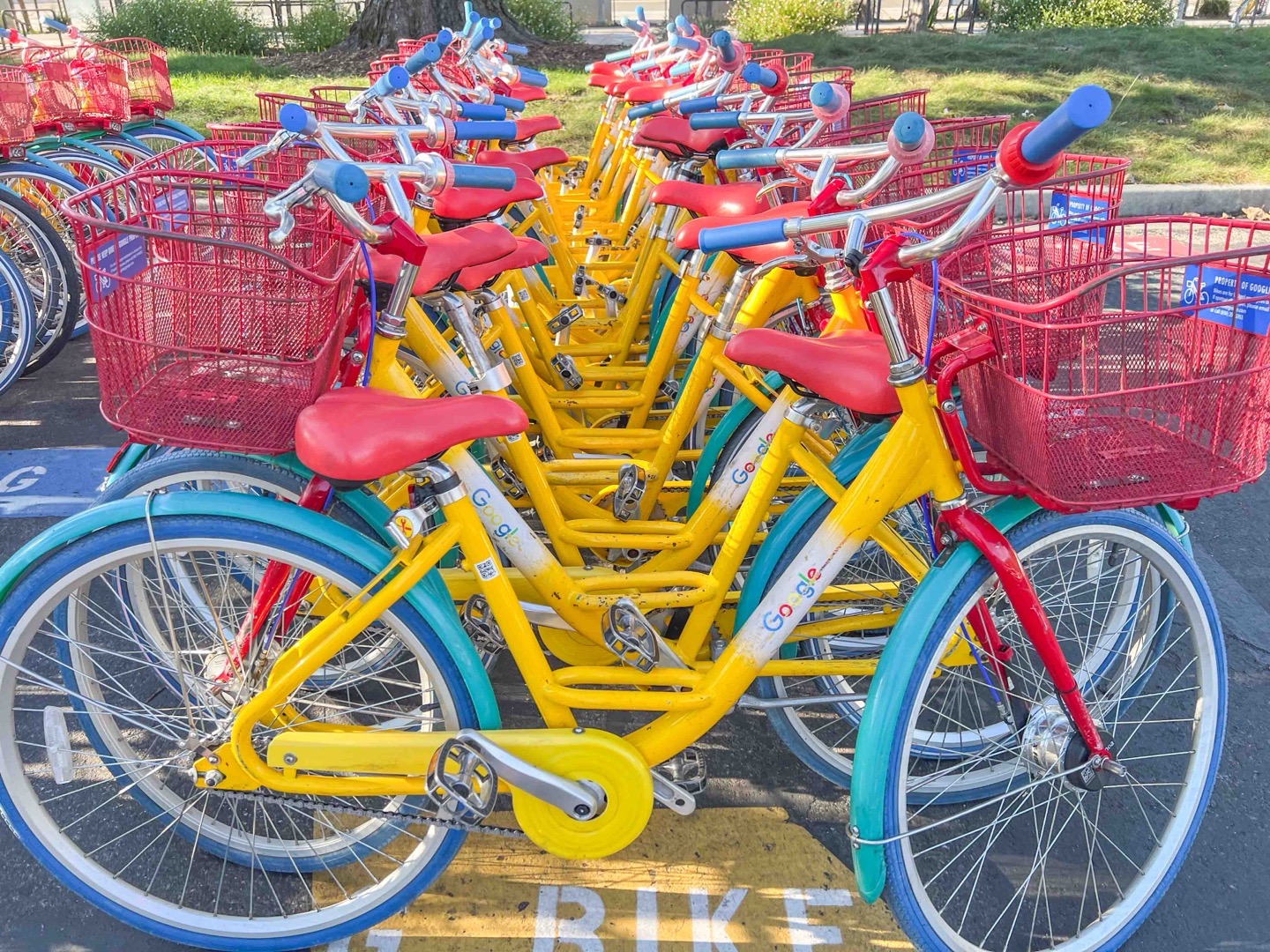
The roughly 2,000 Google Bikes are manufactured by Republic Bikes. However, an in-house team of employees at Google actually maintains them and handles the logistics of re-arranging them on the Google campus. This ensures the bikes are redistributed when they pile up in one spot (such as after Google kills off a product). I’m told that in 2023 there were 1.8 million trips, logging 720,000 miles (!1.2M kilometers).
Further, some bike theft does happen, though the bikes do apparently have trackers in them. It’s unclear where the trackers are, or how they work. But they do have a little note on the front basket in case you find one in your yard, and need to get it back to Google.
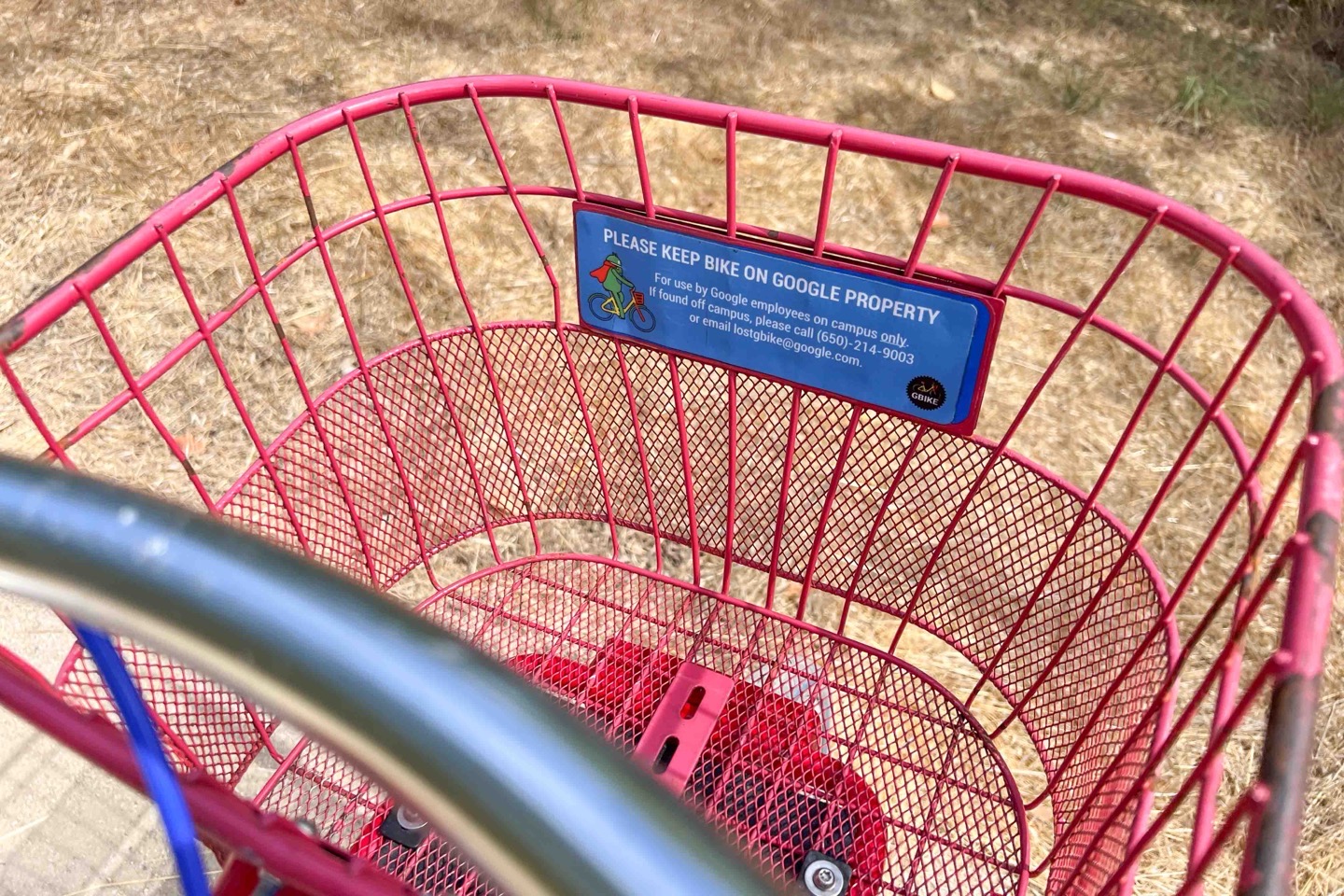
However, you can still actually buy your own Google Bike. This can be done either online in the Google Store, or via their public Google Store on campus. This store sells all sorts of insanely overpriced Google/YouTube branded items, which you’ll feel compelled to buy. Just as I did when I visited.
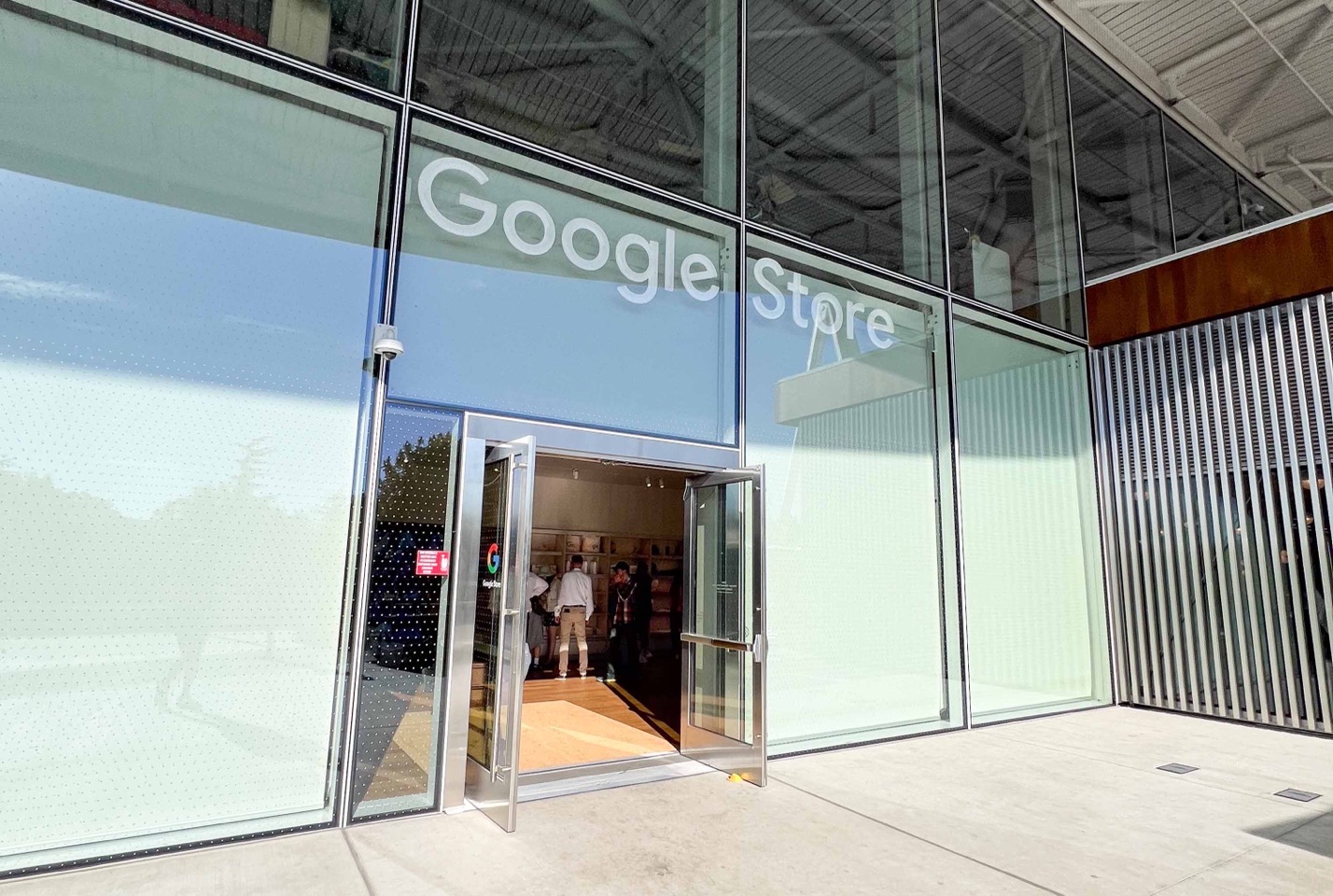
And one of those said items, is said bike, for $55:
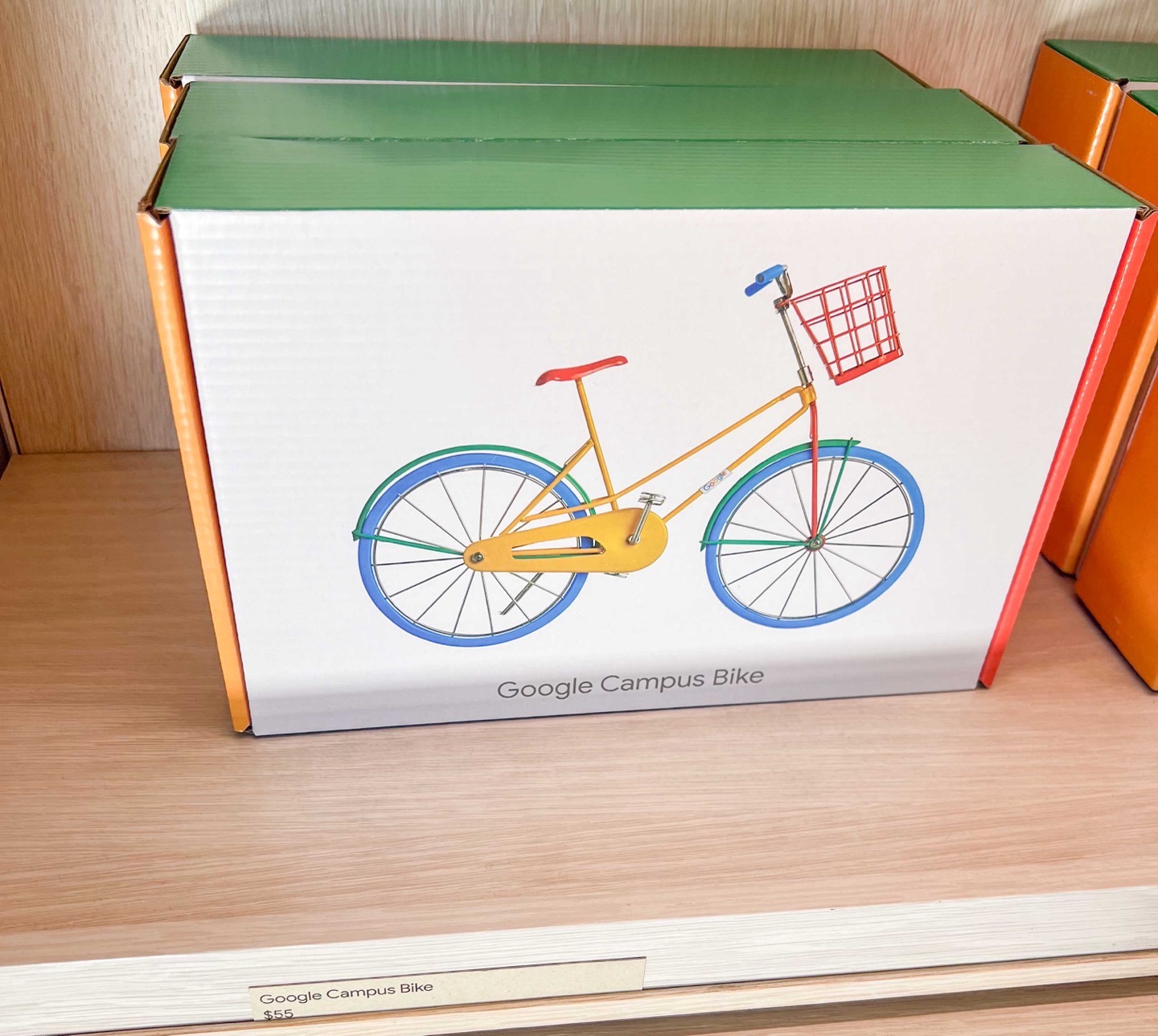
I even pedaled a Google Bike to the Google Store, to buy said bike, before pedaling it back in the front basket, passing other G Bike parking spaces. Ya know, circle of life thing.
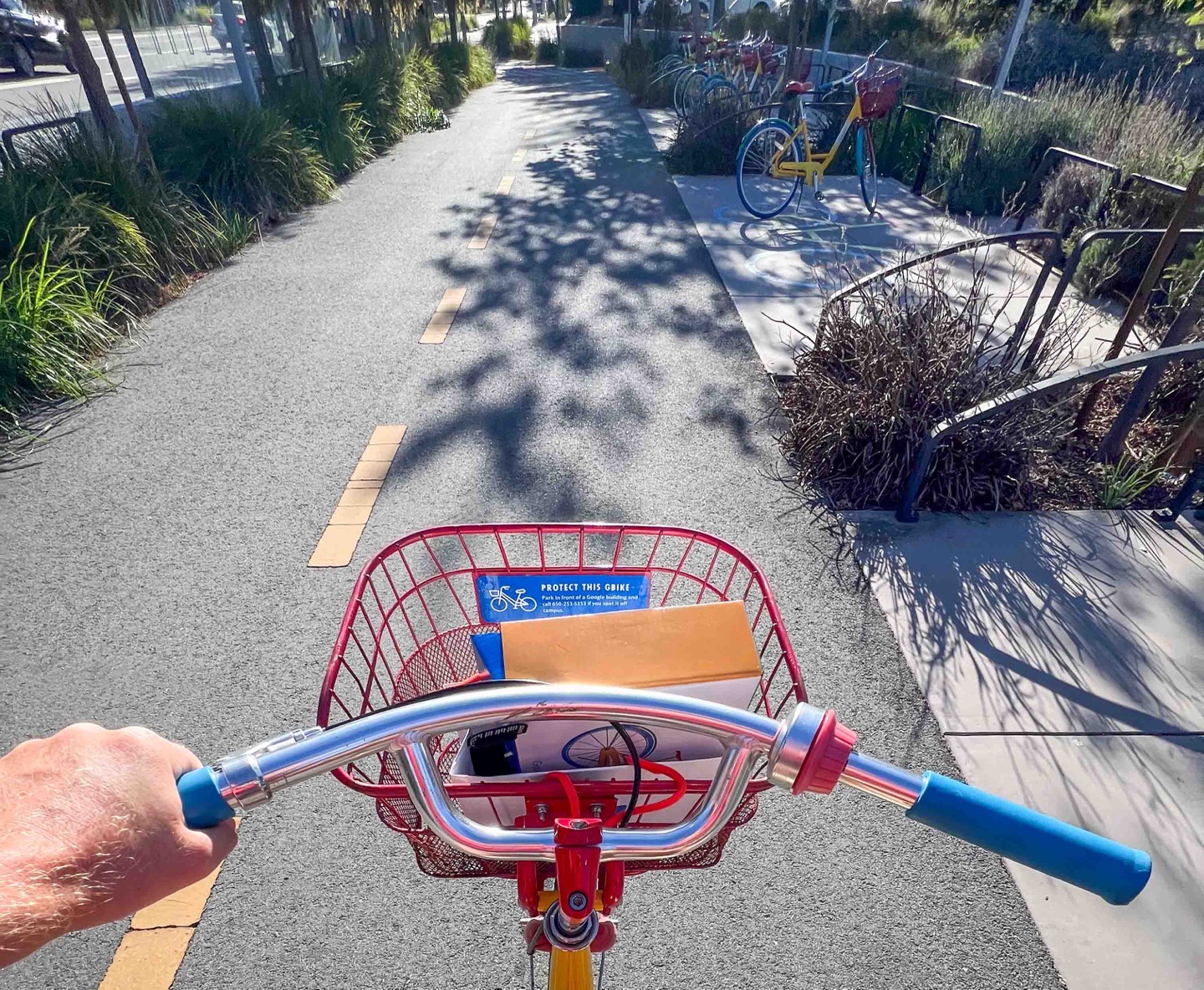
Unboxing the Google Campus Bike (as it is listed as), you’ll find it’s preassembled in a single piece. Just one little plastic bag to take off.
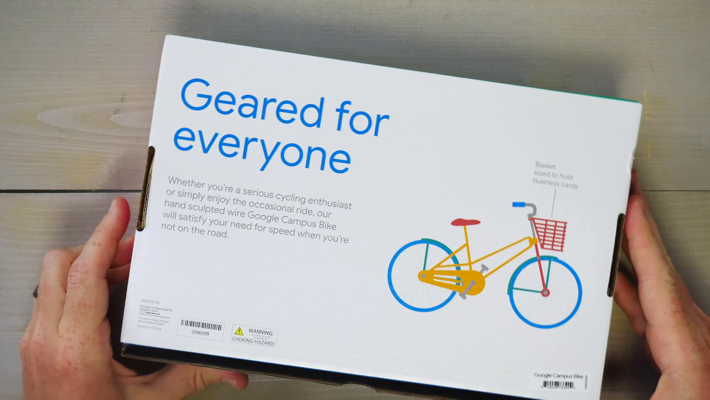
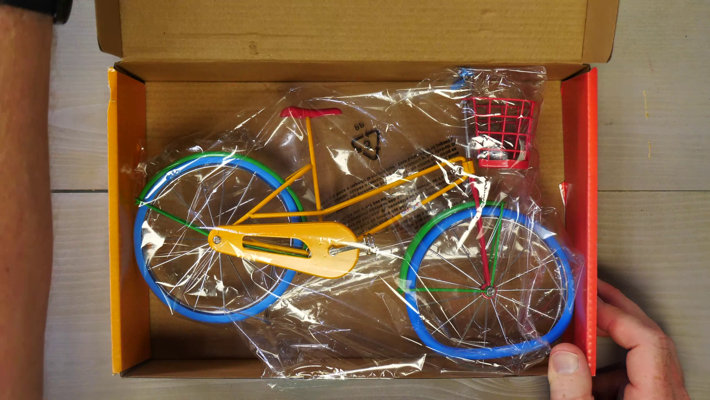
The bike has a number of notable features:
– Crank arms rotate (though, chain is not connected to crank arm)
– Kickstand rotates up/down, will hold bike up
– Both wheels have rubber tires, and do rotate-ish
– Front basket rotates, albeit, with the handelbars
– Front basket can hold business cards
From a realism standpoint, the frame of the model is obviously quite a bit different. It’s much more racing-focused than the more beastly bike share variant. Further, the model’s basket is connected to the handlebar rotation, rather than staying centered. However, beyond that, I think it’s a pretty solid model.
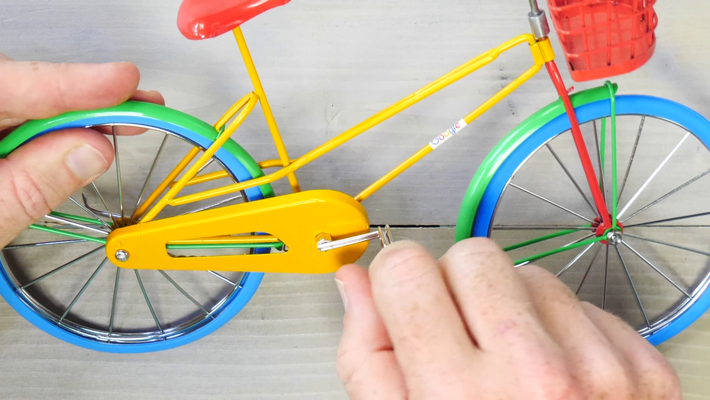
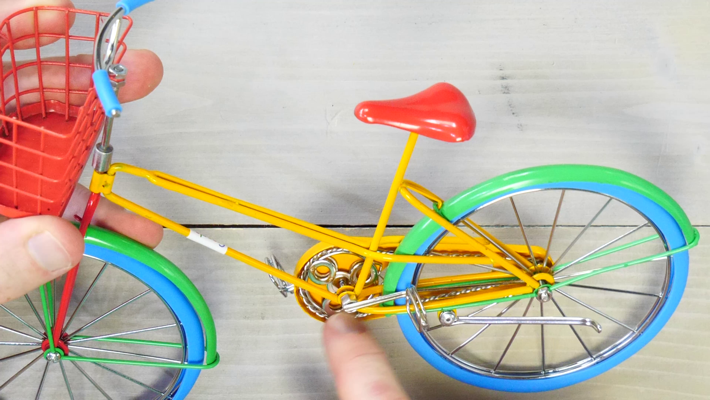
Certainly, $55 is quite a bit for what is very much not $55 in parts. But given I pedaled to the airport in Amsterdam both ways (saving $50 in taxi fares each direction), I was able to justify the purchase to the accountant (my wife).
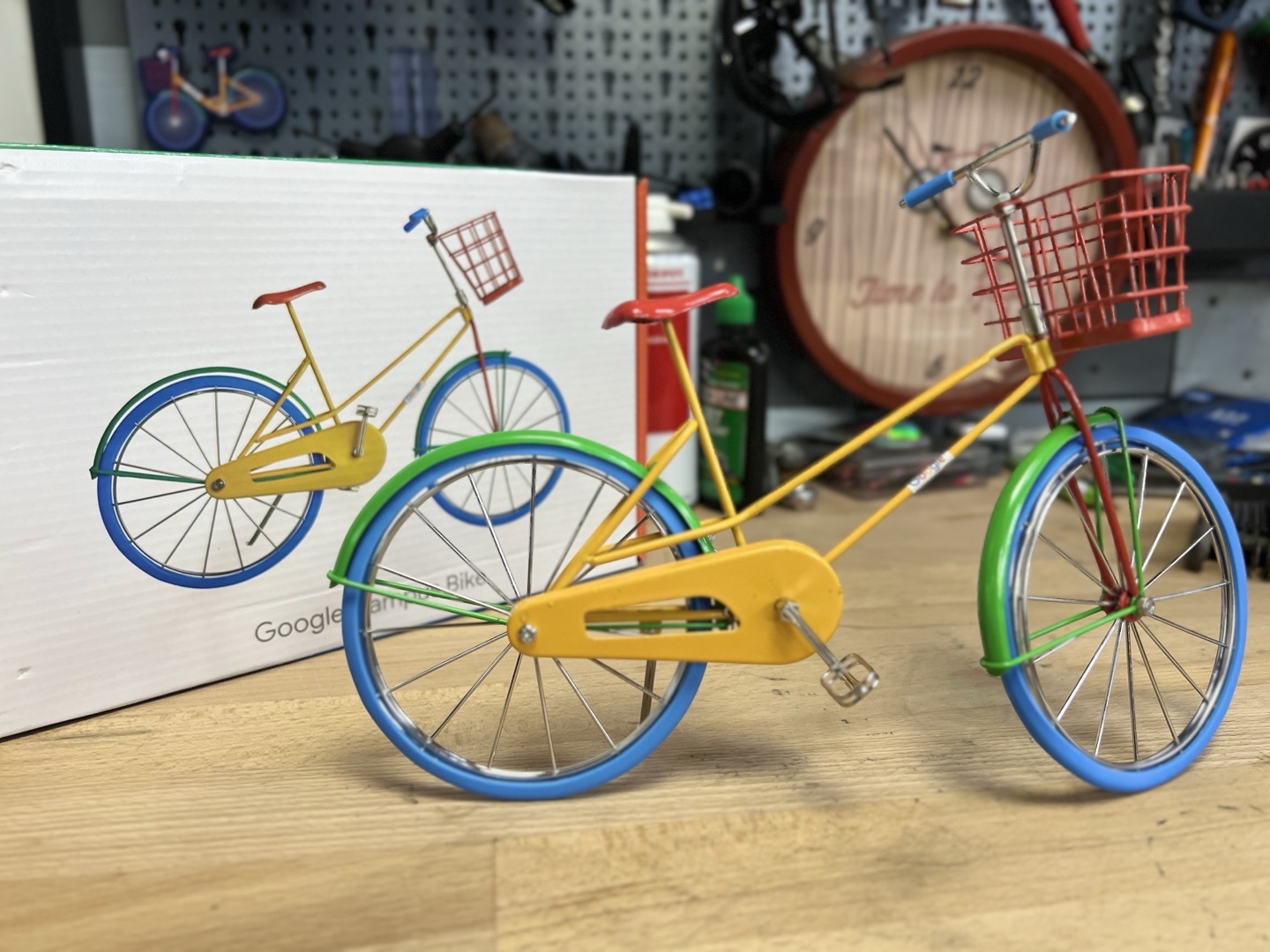
And as for the big bike, next time I’m back on campus, I’ll definitely be using it again. It’s quite efficient, and the lack of having to unlock/login to a bike, is a big plus in my book.
Thanks for reading!
FOUND THIS POST USEFUL? SUPPORT THE SITE!
Hopefully, you found this post useful. The website is really a labor of love, so please consider becoming a DC RAINMAKER Supporter. This gets you an ad-free experience, and access to our (mostly) bi-monthly behind-the-scenes video series of “Shed Talkin’”.
Support DCRainMaker - Shop on Amazon
Otherwise, perhaps consider using the below link if shopping on Amazon. As an Amazon Associate, I earn from qualifying purchases. It doesn’t cost you anything extra, but your purchases help support this website a lot. It could simply be buying toilet paper, or this pizza oven we use and love.



















So, Shimano or SRAM on it?
That brings back memories. When I was young (long ago), I had a Huffy that was very similar, although I didn’t need a sissy hand brake. Did you make the rear tire skid with the coaster brake? Dirt would be perfect for that.
Love
I am a bit disappointed that you did not actually install power meter pedals on it and recorded an activity (showcasing the lack of functionality on the Pixel Watch to them first hand).
A fixie seems an odd choice. Very few people are accustomed to riding a fixie and it does take a bit of getting used to, particular the stopping part. Perhaps the rationale is it’s less desirable to steal, less accommodating of riding longer distances (e.g. off campus), and it tends to keep speeds lower. A hub with a basic freewheel certainly incurs no significant cost.
Pretty sure he misspoke. They are single speed, with kickback rear brakes. One can coast while riding these.
I’m guessing it’s a single speed with a coaster brake, not fixed gear. Looks like it freewheels in the video.
link to youtube.com
Also, I understand that this “review” is for entertainment, not accuracy, but my inner bike nerd insists on commenting:
-I wonder if the tires are airless, and not “pumped up to seemingly about 30 psi.” I don’t see any valve stems.
-Watching the video, I think it’s more accurate to say that the front of the bike weighs 34 pounds, haha. For a durable and cheap fleet bike with a low-step frame, basket, airless tires, chain guard, fenders, hub brakes, and dynamo (?), 34 pounds would be pretty good.
Thanks for the review Ray.
The bike is clearly not a fixie, there’s even mention of this second breaking option: “2) Pedaling backwards via drivetrain braking”
We don’t really see the non-drivetrain side so it may be possible that you can flip the wheel to turn it into a fixie (my single speed bike has that option) but I highly doubt Google would do that.
FWIW, way more companies and actual campuses (universities) should offer the option of free bikes.
Brilliant! (and thorough as ever)
Huge L for journalism – we didn’t get accurate PSI measurements using calibrated equipment for each tire plotted over the course of usage in 10min intervals
Lol, just kidding. Thanks for the entertaining review and good humor.
Reading this was worth it just for this:
This ensures the bikes are redistributed when they pile up in one spot (such as after Google kills off a product).
Chef’s kiss…
The earlier gbikes were a mixie design, like the gift shop model. They rode fantastically flexy and had air tires. The current one is typically a run flat. I regret not liberating a mixie model when they were still around – just a joy to ride.
“Pedaling backwards via drivetrain braking”
By far the worst type of braking as it can so easily be triggered by mistake, but oddly popular in the US.
Great review though, thanks Ray!
As a kid in the Netherlands my bikes where drivetrain braking. Handbrakes only came on my bikes when I was older. I remember it needed a steep learning curve for the handbrakes, not only because braking by leg motion is much more intuitive than braking by squeezing a hand, but also because braking with the front wheel brake is very dangerous if not done overly prudent. Plus it costs more, and is more expensive in maintenance I assume, as it is more delicate.
I don’t see adults riding drivetrain braking bikes in the Netherlands or Belgium. This article made me wonder why. It is an excellent system, robust and intuitive.
You write they are popular in the VS. For non-race bikes, that certainly makes sense to me!
As a kid in the UK we just use to ram our heels into the ground to brake, regardless of what our bikes were fitted with :-) Wish I’d thought of fitting metal heel segs, the sparks would have been awesome (and my shoes might have lasted more than a month).
It’s not an excellent system: if the chain breaks or falls off, you no longer have a brake.
Hand brakes are more delicate and thus have a greater risk of breaking, I’d say. And if the chain breaks or falls off you can always use Neil Jones method above…
One of the best reviews ever, even if for the lol’s side. Thank you very much!
I was on the street near my office in Washington, DC and recognized this same bike with a local hotel’s branding on it. I never would have noticed it without your video Ray. Also, the $55 teaser made me think for a minute that Google was selling the actual bike at some kind of fire sale price!
A Bendix 2-speed kickback hub would resolve the gearing problem. Google has the funds available to buy the patents and revive that product, maybe even improve the actuator spring that would have tines fail.
Campus cycling is not new. I worked at a bike shop in the 70s that serviced the 3-wheel trikes used inside a large manufacturing plant. Similar utility concept, but the basket was between the two rear wheels and capable of carrying tools and parts for the industrial machinery.
The biggest problem was employees would jump off without stopping and the front fork would get bent from uncontrolled impacts.
When I was at Google one of the members of our internal road cycling email list took a GBike up Hicks road Mt Umunhum and wrote a great ride report, unfortunately I can’t remember his name of find the Strava ride (it was recorded). I think he picked the earlier generation bikes that at least had inflated tires.
The angle of the forks on the picture on the front of the box hurt me just to look at. I think even if you’ve never seen a bike in your entire life, that must still look wrong.
I love these bikes, they’re a blast. I used to ride them up the hills behind the Shoreline Amphitheater and bomb down the dirt descents at very unsafe speeds. They’re the definition of “underbiked”.
There have been several generations of g-bike models and this is just one. They also have bigger, geared bikes that you do have to check out and return, that are suited to traveling between campuses, for example from Mountain View to Sunnyvale. That program also has e-bikes. You can get between those campuses entirely off road, which is nice.
I got one the last time I visited. They gave me a Trek FX3 and I used it for a trip from Mountain View across the Dumbarton and back around the bay.
it’s weird that I came here and actually read your review of the google bike. ;).
I tried taking one of these bikes along the Bay Trail. I was only able to sustain something like 4 mph because I had picked an especially windy day and the headwind was really strong and that bike was indeed very heavy. I thought of abandoning it and walking but the rules are to not leave them off campus so I pushed through the whole ride.
Being directly involved with the G-bike program, I really appreciate your G-review as it was spot-on!
Mattg
I worked at Google X and then just [X] from 2014 to 2017. This brings back some memories.
Fun fact: people have, in fact, raced on these things. For example, I won the bike race at a company sponsored team building event back in 2016. Indeed, I set a Strava KOM on a G-bike in that race which still stand to this day (2014-09-08). It is a very slow bike and the KOM is very much beatable on a real bike, so I won’t say too much more, but yeah. They also swapped out pneumatic wheels for foam wheels starting in late 2016 which had a very meaningful and negative impact on performance. It’s hard to tell from the video, but it looks like the foam has stuck around.